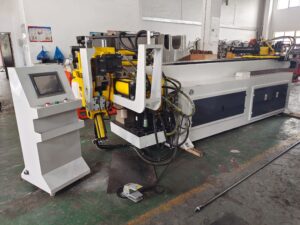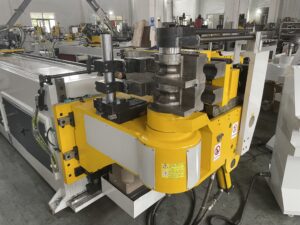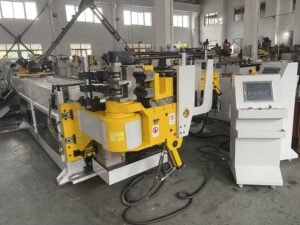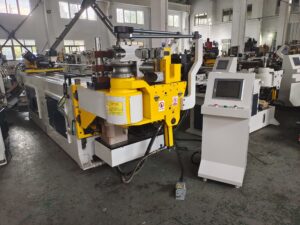Will a Copper Pipe Cutter Cut PVC?
When it comes to plumbing, DIY projects, or even professional installations, having the right tools can make or break your success. Among the many tools available, a copper pipe cutter is a staple for anyone working with metal pipes. But what happens when you need to cut PVC pipes, and all you have on hand is a copper pipe cutter? Will it get the job done, or are you setting yourself up for frustration? In this article, we’ll explore the capabilities of a copper pipe cutter, its compatibility with PVC, and everything you need to know to make an informed decision.

Can a Copper Pipe Cutter Handle PVC? The Short Answer
The short answer is yes—a copper pipe cutter can cut PVC pipes in many cases. However, the real question is whether it’s the best tool for the job and what challenges you might face. PVC, or polyvinyl chloride, is a type of plastic commonly used in plumbing, irrigation, and construction. It’s softer and more flexible than copper, which means it behaves differently under the cutting wheel of a copper pipe cutter.
While a copper pipe cutter can technically cut through PVC, the results may not always be as clean or efficient as when cutting copper. The cutting wheel, designed for metal, may compress or deform the softer PVC material, potentially leading to uneven cuts or crushed pipe ends. Additionally, the size of the pipe and the specific type of copper pipe cutter you’re using can influence the outcome.
Factors to Consider When Using a Copper Pipe Cutter on PVC
To determine whether a copper pipe cutter is suitable for cutting PVC in your specific situation, several factors need to be considered. Let’s break them down:
1. Pipe Diameter and Wall Thickness
Copper pipe cutters are designed to handle pipes of specific diameters, typically ranging from 1/8 inch to 2 inches or more, depending on the model. PVC pipes come in a wide range of sizes, from small-diameter pipes used in irrigation to larger ones used in drainage systems. If the PVC pipe’s diameter falls within the cutter’s capacity, it’s more likely to work effectively. However, thicker-walled PVC pipes (such as Schedule 80) may require more effort and could strain the tool, potentially dulling the cutting wheel.
2. Type of Copper Pipe Cutter
Not all copper pipe cutters are created equal. There are two main types: standard pipe cutters and ratcheting pipe cutters. Standard cutters require you to manually rotate the tool around the pipe, tightening the wheel as you go. Ratcheting cutters, on the other hand, use a ratchet mechanism to apply consistent pressure, making them more efficient for larger or harder pipes. For PVC, a ratcheting copper pipe cutter may provide better results, especially on larger pipes, as it reduces the risk of deforming the material.
3. Blade Sharpness and Design
The cutting wheel of a copper pipe cutter is designed for metal, which means it may not be optimized for cutting plastic. Over time, cutting PVC can dull the blade, reducing its effectiveness on copper pipes later. Some manufacturers offer specialized cutting wheels for plastic, which can be swapped into a standard copper pipe cutter. If you plan to cut PVC frequently, investing in a plastic-specific cutting wheel could be a game-changer.
4. Desired Cut Quality
If you’re working on a project where precision and aesthetics are critical—such as exposed plumbing or irrigation systems—you’ll want a clean, square cut on your PVC pipe. A copper pipe cutter may not always deliver this level of precision on PVC, especially if the pipe deforms under pressure. For professional-grade results, a dedicated PVC pipe cutter or a saw designed for plastic may be a better choice.
Step-by-Step Guide: Using a Copper Pipe Cutter on PVC
If you’ve decided to use a copper pipe cutter on PVC, following the right steps can help you achieve the best possible results. Here’s a step-by-step guide:
- Measure and Mark the Pipe: Use a measuring tape and a marker to indicate where you want to cut the PVC pipe. Ensure the mark is visible and straight around the pipe’s circumference.
- Position the Cutter: Open the copper pipe cutter and place it around the PVC pipe, aligning the cutting wheel with your mark. Tighten the adjustment knob until the wheel makes light contact with the pipe.
- Rotate and Tighten: Rotate the cutter around the pipe, tightening the knob slightly after each full rotation. Apply even pressure to avoid deforming the pipe.
- Check the Cut: Once the pipe is cut through, inspect the edge. If there are burrs or rough spots, use a deburring tool or sandpaper to smooth them out.
- Clean the Tool: After cutting PVC, clean the cutting wheel of your copper pipe cutter to remove any plastic residue, which could affect its performance on metal pipes.
Pros and Cons of Using a Copper Pipe Cutter on PVC
To help you decide whether this approach is right for your project, let’s weigh the pros and cons:
Pros
- Convenience: If you already own a copper pipe cutter, using it on PVC can save you from purchasing an additional tool.
- Portability: Copper pipe cutters are compact and easy to carry, making them ideal for on-the-go repairs.
- Precision on Thin Pipes: For small-diameter, thin-walled PVC pipes, a copper pipe cutter can deliver clean cuts with minimal effort.
Cons
- Risk of Deformation: PVC is softer than copper, so there’s a risk of crushing or deforming the pipe, especially with larger diameters or thicker walls.
- Blade Wear: Cutting PVC can dull the cutting wheel, reducing its effectiveness on metal pipes.
- Not Ideal for Large Projects: If you’re cutting a large number of PVC pipes, a dedicated PVC cutter or saw will be faster and more efficient.
Alternatives to Using a Copper Pipe Cutter on PVC
While a copper pipe cutter can work in a pinch, there are better tools designed specifically for cutting PVC. Here are some alternatives to consider:
1. PVC Pipe Cutters
PVC pipe cutters are designed with a ratcheting mechanism and a blade optimized for cutting plastic. They deliver clean, square cuts without deforming the pipe, making them ideal for plumbing and irrigation projects. These cutters are affordable and widely available, making them a worthwhile investment for frequent PVC work.
2. Hacksaw or Miter Saw
For larger PVC pipes or projects where precision is less critical, a hacksaw or miter saw can be effective. Be sure to use a blade with fine teeth to minimize burrs, and consider using a miter box to ensure straight cuts.
3. Oscillating Multi-Tool
An oscillating multi-tool with a plastic-cutting blade is another versatile option, especially for cutting PVC in tight spaces or at odd angles. This tool is particularly useful for DIY enthusiasts who already own a multi-tool for other projects.
Real-World Case Study: Using a Copper Pipe Cutter on PVC in an Emergency
To illustrate the practical implications of using a copper tube cutter on PVC, let’s look at a real-world example.
The Scenario
John, a homeowner in a rural area, was working on an irrigation system for his garden. He needed to install a new section of 1-inch PVC pipe to extend his system. However, when he reached for his PVC pipe cutter, he realized it was missing—likely left behind at a friend’s house during a previous project. With no hardware store nearby and a tight deadline to finish the installation before an upcoming heatwave, John decided to use the copper tube cutter he had in his toolbox.
The Process
John measured and marked the PVC tube, then carefully positioned his standard copper tube cutter around it. He rotated the cutter slowly, tightening the wheel after each rotation, and noticed that the PVC pipe began to deform slightly under the pressure. To minimize this, he adjusted his technique, applying less pressure and making more rotations. After a few minutes, he successfully cut through the pipe.
The Outcome
The cut was not as clean as it would have been with a dedicated PVC cutter, but it was functional. John used sandpaper to smooth out the rough edges and deburred the inside of the pipe to ensure a proper fit with his fittings. The irrigation system was installed successfully, and John avoided any leaks. However, he noticed that the cutting wheel of his copper tube cutter had become slightly dulled, requiring sharpening before its next use on copper pipes.
The Lesson
John’s experience highlights both the potential and the limitations of using a copper tube cutter on PVC. In an emergency, it can get the job done, but for regular use or professional-grade results, a dedicated PVC cutter is the better choice. John later invested in a ratcheting PVC cutter to avoid similar challenges in the future.
Tips for Maintaining Your Copper Pipe Cutter After Cutting PVC
If you do use a copper tube cutter on PVC, proper maintenance is essential to keep the tool in good condition. Here are some tips:
- Clean the Cutting Wheel: Use a cloth or brush to remove any plastic residue from the cutting wheel. This prevents buildup that could affect future cuts on metal pipes.
- Check for Dullness: Inspect the cutting wheel for signs of dullness or damage. If necessary, sharpen or replace the wheel to restore its performance.
- Lubricate Moving Parts: Apply a light machine oil to the adjustment mechanism and rollers to ensure smooth operation.
- Store Properly: Store your copper tube cutter in a dry, protected environment to prevent rust or corrosion, especially if you’ve used it on wet PVC pipes.
For more information, please click here



